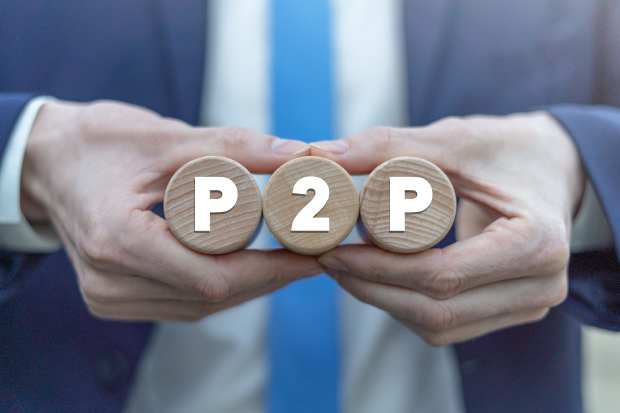Is P2P A (Good) Trojan Horse For Banks?

In mythology, the Trojan Horse is a symbol of hidden intent — a gift hiding warriors ready to slash and burn. In tech, the Trojan Horse delivers malware.
In financial services, might the Trojan Horse deliver a bit of good fortune to both the financial institution (FI) and customer alike? Consider the scenario of a payments service that, upon embrace, keeps the customer relationship sticky, and opens the door to new products to be offered and used. For the FI, top and bottom lines accrue. For the customer, ease and speed of payments, and an accumulating list of use cases, make commerce and financial life easier.
Peer-to-peer (P2P) may be the Trojan Horse that spurs a new payments landscape for banks and their clients — an onramp to innovation in financial services that represents, in a way, the (initial) digital banking transaction that keeps on giving.
In a podcast with Karen Webster, Derek Swords, vice president of product management and electronic payments at Fiserv, pointed to the rise of Zelle, the P2P offering that logged $35 billion in payments volume in the fourth quarter of last year, up 61 percent year on year and 12 percent sequentially. As reported in this space earlier this year, the growth has come in tandem with an increased embrace by banks — especially smaller community banks — and credit unions.
Swords noted that the growth in P2P, especially the faster payments functionality (where money is available in minutes if both sender and receiver are registered), reflects the reality that “there is the expectation of ‘I want what I want … and I want it now’” in so many industries (such as media). Consumers, he said, expect to experience ease when it comes to sending money, and a transaction should be akin to simply handing money over the desk to the intended recipient.
Here’s where the Trojan Horse analogy comes into play: As Swords told Webster, once customers get used to the ease and real-time hallmarks of P2P, they will demand those attributes across other interactions and transactions that mark their daily financial lives.
“It will be a fast follow,” he said, noting that the classic P2P, consumer-to-consumer fund flow is the first and easiest use case for financial firms that want to add new services to keep customer relationships in place (and, of course, form new ones).
He offered the example of his own company’s work in enabling account-to-account transfers — and helping FIs to send and receive cash in real time between disparate financial institutions (a different form of P2P activity, one might say). The use cases can extend to disbursing funds, bill payments and commercial pay — and the list is likely to go on.
“Once individual institutions have made the investments in setting up the endpoints and the connections, and the networks, these things all become significantly easier [to deploy] over time,” he said.
Think of P2P, then, as a bellwether for setting consumers’ expectations on what an FI can and should do.
The Trust Factor
No matter the use case, the glue underpinning and connecting it all can be boiled down to two simple words: trust factor. Banks and other traditional FIs, said Swords, have this in place, forged over decades (if not centuries). “It is a big advantage,” as consumers consider these firms stable and reliable enough to house and keep their money safe.
Zelle’s uptake illustrates the trust factor at work, he added, as customers who had not previously used P2P (in this case, Zelle) take advantage of this capability — a new feature offered in a relationship (and in places) with which they are already familiar. This is why, in terms of demographics, the baby boomers and Gen Xers (the customers who already trust FIs) are tapping into the service to, for example, make rent and utility payments, as the Q4 data showed.
The Ubiquity Factor
For widespread adoption, ubiquity is key — a reality where FIs make up their minds to leverage the trust factor with the power of innovation. FIs cannot rely simply on trust or innovation to garner (and keep) customers. Both factors must be embraced and nurtured.
“Financial institutions are not necessarily monolithic in their outlook,” said Swords.
He stated that there are firms that want to “jump in the pool immediately and get moving” on P2P (and the use cases that would conceivably proliferate), and there are others that need convincing.
“Enabling things like Zelle or P2P payments or faster payments is really critical for these institutions to think about, especially the long-term relationships that they want to maintain with their customers,” he said.
For the banks, it is important to “digitally engage” with customers, and be top of mind as it relates to financial transactions. Otherwise, the consumers will go elsewhere, of course.
“Would you rather your customer be using some other external third party to move money, to pay bills, to send it to their friends?” he asked, rhetorically, “or would you rather have the opportunity for them to engage with your institution? You’ve got a lot more opportunity to provide the customer with value, to take advantage of the data that you already have … to provide relevant advisory offerings. And you can monetize the transactions.”
